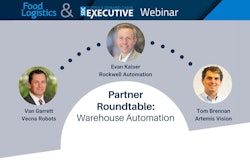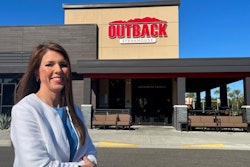
Some warehouse management software (WMS) vendors use the big selling point of never having to upgrade your WMS again because you use their system. To think 20 years later that the use of cloud technologies to make upgrades seamless is just now becoming prevalent in any industry is astounding. When was the last time you had to upgrade Facebook, Amazon or Netflix? The answer is you don’t -- it just happens without you caring, and that’s been the case for a long time for most modern software systems.
To put this in perspective, when Software-as-a-Service (SaaS) automatic upgrades became the standard for software in other industries, the best commercial laptop was offering a single CPU with 64 MB of RAM. You’re most likely reading this on a more powerful machine than that, so you’ve successfully adopted technology faster than warehousing software groups (or vendors). So, how did we get here, and where are we trying to go?
Cloud computing
High-level concept to know. First comes the cloud. This gives access to all your data in real time. Software that lives here doesn’t need to be updated. Compute is infinitely scalable. Your IT team must deal with significantly less (but still some) headaches on a day-to-day basis. With good design, costs go down.
What you really need to know. Finding people that are experts in managing the hardware infrastructure needed to run the software world is really challenging. Luckily, larger software companies have made it easy for the industry as a whole to migrate to the cloud. Yes, you do need people who are experts in doing this, and you’ll start to hire folks with “DevOps” somewhere in their title. The good news is that they’re way easier to find than database administrators these days.
Descriptive analytics
High-level concept to know. Once you have your data in the cloud, you can start to understand why the things that happen, happen. Put together dashboards that show you what is happening in real-time so that you can react accordingly.
What you really need to know. There is a lot of software out there that helps you do this more easily. There is a 100% chance somebody on your team tells you that they can go and build a series of dashboards and applications that will address every one of those needs. This is likely true. However, as a company focused on running a complex supply chain, the last thing you want to do is maintain software releases over time. Buy from a specialized supply chain vendor or even use a dashboarding solution before deciding to build (and maintain) it yourself.
Predictive analytics
High-level concept to know. Once you know why things are happening, you want to start to predict when they will happen again. Knowing when something will be a problem is the first step in avoiding it.
What you really need to know. Artificial intelligence (AI) and machine learning. These are building blocks, not solutions. Use these terms with caution, and mentally interchange them with “math.” If it sounds stupid when replacing “machine learning” with “math,” it probably is. While these technologies can absolutely add value and more “predictivity” into the distribution center, understanding what you really want to accomplish is more critical. When thinking about the predictivity you want for your site, it’s helpful to phrase it this way: “If I knew that X was going to happen Y hours ahead of time, then I would be able to Z.” At the end of the day, it doesn’t matter what X and Y are if Z doesn’t result in time savings, dollar savings or increased customer fill rates.
Prescriptive analytics
High-level concept to know. Prescriptive analytics is all about taking actions to traverse the optimal path to the best outcome in the future. If we know where we are and what’s going to happen, you should be able to use mathematics to influence decision making. With prescriptive analytics, you can consistently review potential outcomes and take the appropriate actions to optimize results.
What you really need to know. Most engineers don’t use the term prescriptive analytics because they’re not quite sure exactly what it means. Marketing teams use it because it sounds cool and it’s easy for decision makers to understand. You get prescribed medicine, and it makes you feel better. You get prescribed analytics and magically your problems are solved. The reality is, in warehousing, prescriptive analytics can help to drive a few core changes that make distribution centers more efficient, merging highly fragmented decision processes (loading, picking, receiving, cuts management, etc.), increasing capacity per headcount, increasing fill rate and optimizing work allocation. Even at a mid-sized distribution center, these few opportunities can add up to millions of dollars in capacity growth. That said, this optimized decision-making sits on the shoulders of giants and requires cloud-centric descriptive and predictive analytics to be successful.
What do you have, and what do you need?
The bottom line is, there are a lot of critical software components required to move a distribution center into the 21st century. Those pieces require companies to break the mold of a single monolithic software system doing everything and understand where new technologies can help deliver more and drive efficiency. Keep expectations realistic and consider that the movement to dark warehousing is the layering of numerous technologies. Start with small projects and ensure you have a team around you able to support and sustain them. Work with the right vendors, partners and councilors to make sure you are integrating technology in a way that works for you. In the end, be constantly innovating—your competitors are.




















